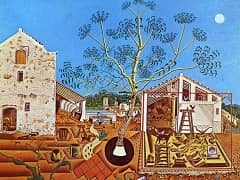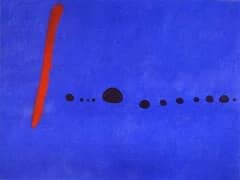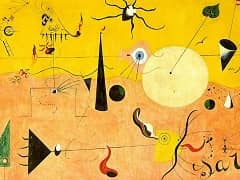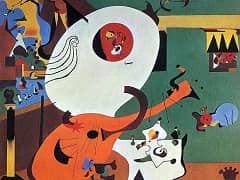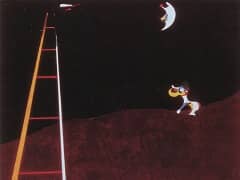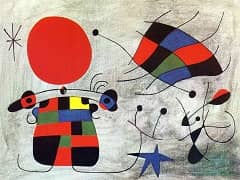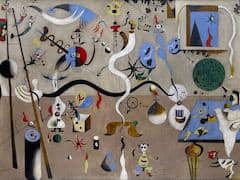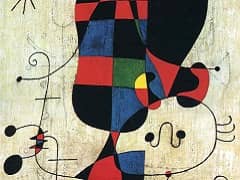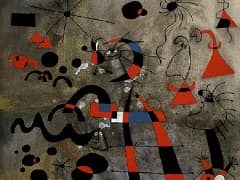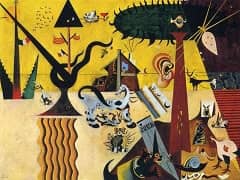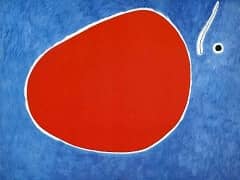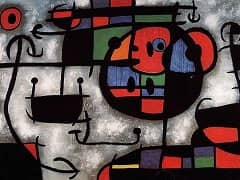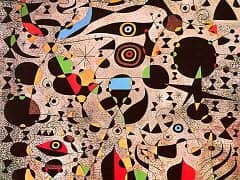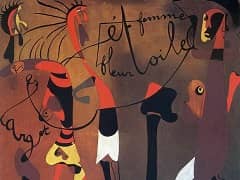Snail, Woman, Flower, Star, 1934 by Joan Miro

A common myth around the story of the Impressionist painters such as Claude Monet and Vincent van Gogh, was that they executed their work entirely en plein air. the reality being that most of the painting was in fact carried out in the studio. There is an analogy here with the work of Miro: despite notions of Automatism in his work, he in fact planned his paintings meticulously. He would begin with a number of sketches that often contained descriptions of the colours to be used, before 'scaling-up' the work, often on to large canvases such as this, which measures nearly two metres (six and a half feet) in height.
Miro's dream-like visions are created on a complex ground, made up of glazed layers of paint. The figures in the composition are fractured, often having a whimsical or humorous quality, being images of playfully distorted animal forms or twisted organic shapes. Yet they always had a point or points of reference, symbolized either by recognizable shapes, written notations or both. Sometimes these ethereal organic forms ore reduced to simple lines or spots, but nearly always with splashes of colour. This period is marked by a number of experiments with collage following a particular crisis when he affirmed the 'murder of painting'. These experiments are self-evident in Snail, Woman, Flower, Star.

